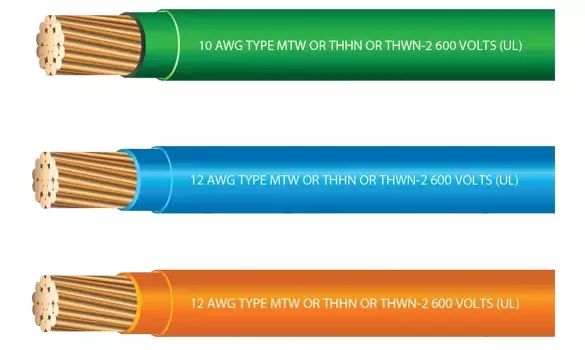Important Notes:
- A conductor size expressed in mm² shall be IEC standard and sizes in AWG or kcmil shall be IEEE standard.
- PEC standard conductors are similar to IEEE standards except that conductor sizes are expressed in mm².
- PEC standard conductors sizes are not equivalent to IEC standard conductor sizes despite both being expressed in mm²
I. Introduction
Conductors may be either solid or stranded. Solid conductors may be used for sizes up to 12 AWG [1] or 16 mm² [2]. Solid copper conductors having nominal cross-sectional areas of 25 mm² and above are for particular types of cable, e.g. mineral insulated, and not for general purposes [2]. Solid conductors larger than these would be stiff and difficult to install, therefore stranded construction is normally used for these larger conductors.
II. Conductor stranding (IEEE 525)
The number of strands and size of each strand for a given size is dependent on the use of the conductor. Common stranding classes are summarized in IEEE 525 [1] Table C.1. The number of strands per conductor is standardized and is summarized in IEEE 525 [1] Table C.2. Class B stranding is normally used for substation installations.
| Class | Use | ||
|---|---|---|---|
| B | Power cables | ||
| C | Power cables, where more flexible stranding than Class B is desired | ||
| D | Power cables where extra flexible stranding is desired | ||
| G | All cables for portable use | ||
| H | All cables where extreme flexibility is required, such as for use on take-up reels, etc. | ||
| I | Apparatus cables and motor leads | ||
| K | Cords and cables composed of 30 AWG copper wires. | ||
| M | Cords and cables composed of 34 AWG copper wires. |
| Class | 14-2 AWG | 1-4/0 AWG | 250–500 MCM |
|---|---|---|---|
| B | 7 | 19 | 37 |
| C | 19 | 37 | 61 |
| D | 37 | 61 | 91 |
| G | 49 | 133 | 259 |
| H | 133 | 259 | 427 |
III. Conductor stranding (IEC 60288)
IEC conductors have been divided into four classes, 1, 2, 5 and 6. Those in classes 1 and 2 are intended for use in cables for fixed installations. Classes 5 and 6 are intended for use in flexible cables and cords but may also be used for fixed installations.
| Class | Description |
|---|---|
| 1 | solid conductors |
| 2 | stranded conductors |
| 5 | flexible conductors |
| 6 | flexible conductors which are more flexible than class 5 |
